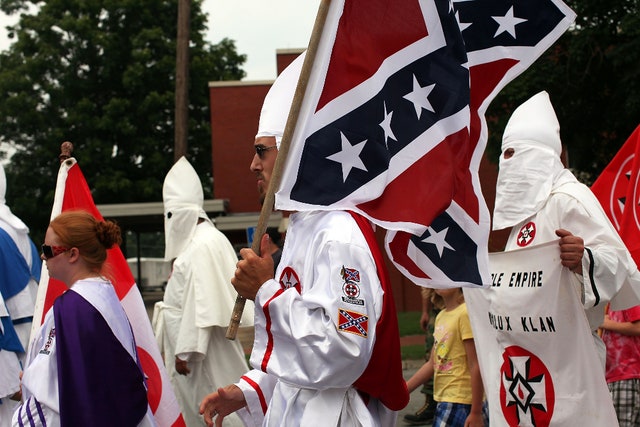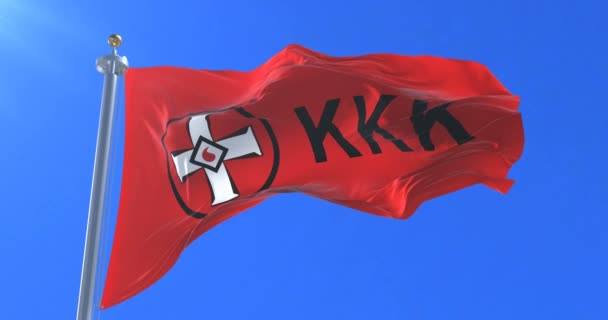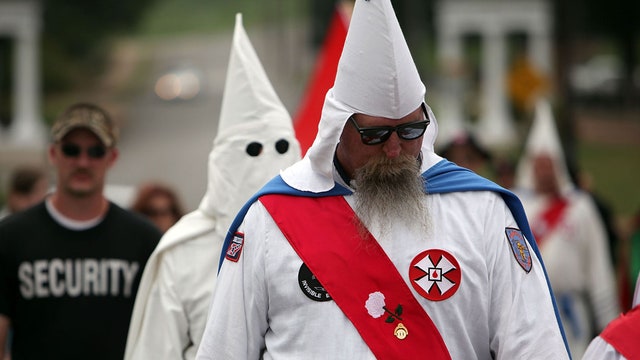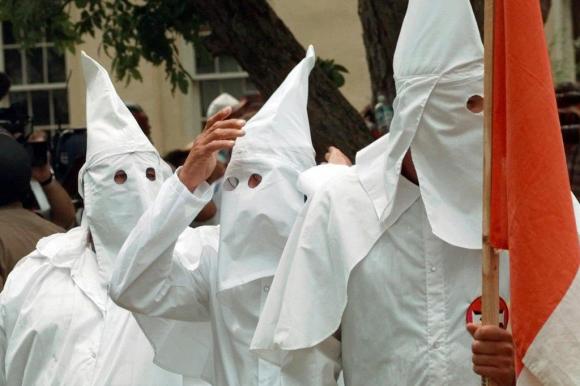- Ku-Kluxism and Democracy
The Genesis
Originating in Tennessee in 1867, the secret politico-military order commonly known as the Ku-Klux has rapidly spread throughout the South, adopting various names such as “The Invisible Empire,” “The White Brotherhood,” “The Council of Safety,” and “The Invisible Circle.” The efforts of the Congressional Committee, as well as those of the subcommittees that have visited different localities in the South, have unearthed and brought to light a wealth of information in the form of sworn testimony against this secret armed political organization, known by various designations. This testimony is too detailed and cumulative in facts to be dismissed by the demagogues of the party with which the organization is cooperating. Furthermore, given the overwhelming evidence of violence and outrage against both African Americans and white Republicans, it is no longer credible for these interested demagogues to attribute these acts to mere neighborhood prejudice and personal feuds.
The sworn testimony reveals the troubling fact that in most cases, the outrages and violence have been executed through intelligent, covert, and systematic organization and direction. Notably, the more active perpetrators within the order are reserved for acts of violence, while the more influential and reputable members assist the organization by shaping public sentiment, providing bail bonds for arrested individuals, securing suitable witnesses, and influencing juries. These so-called respectable individuals assure newspaper correspondents and other inquirers that “everything is lovely” in their region. The outlaws of Southern society find a welcome place in the Klan and serve as the primary agents for acts of bloodshed and other violence. The fraternal relationships between these individuals and the influential leaders of this political brotherhood have the opposite effect of deterring them from threatening the lives of good citizens and disrupting the tranquility of our country.
Even when accounting for potential exaggeration, it is evident that a significant portion of the Southern population, as well as some Northern Democrats, are in close and active sympathy with the organization and willing to cooperate with it. Consequently, it can be reasonably estimated that its effective strength comprises half a million individuals who are, in effect, aligned with the Democratic Party. The testimony gathered by the Congressional Committees to date conclusively demonstrates that the Ku-Klux organization has been designed and employed to eradicate Republicanism in the South. This conspiracy is both horrifying in its inception and terrifying in its consequences, becoming a matter of public concern. The accumulated and well-documented evidence resulting from Congressional investigations shows that numerous victims have been sacrificed to this Southern Democratic cause. Although the current tally is alarming, the list is far from complete.
- First Klan: 1865–1871
On December 24, 1865, shortly after the Civil War, six Confederate veterans from Pulaski, Tennessee, founded the original Ku Klux Klan. This occurred during the Reconstruction of the South and aimed to intimidate Southern blacks, deterring them from participating in politics and exploiting their labor. The six Confederate veterans involved were:
- Frank McCord
- Richard Reed
- John Lester
- John Kennedy
- J. Calvin Jones
- James Crowe
Initially, the group was known briefly as the “Kuklux Clan.” The Ku Klux Klan was among several secret, oath-bound organizations that employed violence, including the Southern Cross in New Orleans (1865) and the Knights of the White Camelia (1867) in Louisiana. Originally, the Klan was intended solely for entertainment, devoid of political motivations. The members engaged in social antics, which gradually escalated to cruel pranks.
Historians generally classify the Ku Klux Klan as part of the post-Civil War insurgent violence, attributing it not only to the high number of veterans in the population but also to efforts to control the dramatically changed social situation through extrajudicial means to restore white supremacy. The Klan employed public violence against Black people and their allies as a form of intimidation, burning houses, attacking, and killing Black individuals, leaving their bodies on display along roads. While racism was a core tenet of the Klan, antisemitism was not prevalent. Many prominent Southern Jews identified with Southern culture, resulting in instances of Jewish participation in the Klan.
At a meeting in 1867 in Nashville, Tennessee, Klan members attempted to establish a hierarchical organization, envisioning local chapters reporting to a national headquarters. Although most members were veterans accustomed to military hierarchy, the Klan never operated under a centralized structure. Local chapters and bands remained highly independent, without hierarchical levels or state headquarters. Klan members often used violence to settle personal feuds and local grudges, working to restore white dominance in the disrupted postwar society.
Confederate General Nathan Bedford Forrest was elected as the first Grand Wizard, asserting himself as the Klan’s national leader. In an 1868 newspaper interview, Forrest stated that the Klan’s primary opposition was to the Loyal Leagues and Republican state governments. He argued that many Southerners believed Black people were voting for the Republican Party because they were being manipulated by the Loyal Leagues. Despite Forrest’s efforts, local Klan units never fully accepted centralized control and continued to operate independently.
Historian Elaine Frantz Parsons describes the KKK’s membership as follows:
“Lifting the Klan mask revealed a chaotic multitude of anti-Black vigilante groups, disgruntled poor white farmers, wartime guerrilla bands, displaced Democratic politicians, illegal whiskey distillers, coercive moral reformers, sadists, rapists, white workmen fearful of Black competition, employers trying to enforce labor discipline, common thieves, neighbors with decades-old grudges, and even a few freedmen and white Republicans who allied with Democratic whites or had criminal agendas of their own. Indeed, all they had in common, besides being overwhelmingly white, Southern, and Democratic, was that they called themselves, or were called, Klansmen.”

Effectively, the Klan functioned as a military force aligned with the interests of the Democratic Party, the planter class, and those seeking the restoration of white supremacy. Their efforts aimed to suppress the education, economic progress, voting rights, and right to bear arms of Black individuals. The Klan swiftly expanded its reach into nearly every Southern state, instigating a reign of terror against Republican leaders, regardless of race. Among the political figures assassinated during this campaign were Arkansas Congressman James M. Hinds, three members of the South Carolina legislature, and several individuals who participated in constitutional conventions.
Klan members donned masks and robes to conceal their identities, heightening the theatricality of their night raids, which they favored for their attacks. Many operated in small towns and rural areas where residents were familiar with one another, yet some attackers were still identifiable by their voices and mannerisms. The Klan targeted Black members of the Loyal Leagues and intimidated Southern Republicans and Freedmen’s Bureau workers. Their victims extended beyond Black political leaders to include heads of households, church leaders, and community organizers, as these individuals held various roles within society.
In the 18-month period leading up to June 1867, North and South Carolina witnessed 197 murders and 548 cases of aggravated assault. Louisiana saw over 2,000 casualties, including fatalities and injuries, just weeks before the November 1868 Presidential election. Despite St. Landry Parish’s Republican majority of 1,071, no Republicans participated in the fall elections following the violence. White Democrats cast the entire parish vote against President Grant’s opponent. The Ku Klux Klan targeted and attacked over 200 Black Republicans, pursuing them through the woods, and executing thirteen captives taken from jail. Additionally, a mass grave containing 25 bodies was discovered in the woods. The Klan coerced individuals to vote Democratic and issued certificates as proof.
In Jackson County, Florida alone, Klansmen were responsible for the deaths of over 150 African Americans, with similar atrocities occurring in neighboring counties such as Madison, Alachua, Columbia, and Hamilton. Records from the Florida Freedmen’s Bureau provide detailed accounts of beatings and murders inflicted upon freedmen and their white allies by members of the Ku Klux Klan.
By 1868, two years after its formation, the activity of the Klan started to decline. Members resorted to concealing their identities behind Klan masks and robes to evade prosecution for their freelance violence. Influential Southern Democrats grew concerned that Klan lawlessness could justify continued federal intervention in the South, prompting some to disavow the organization. Outlandish claims, such as those made by Georgian B. H. Hill alleging that some of the outrages were committed by political allies of the victims, further fueled the controversy.
Resistance to First Klan
Union Army veterans in mountainous Blount County, Alabama, organized “the anti-Ku Klux” to quell violence by threatening Klansmen with reprisals unless they ceased their attacks on Unionists and the burning of Black churches and schools. In Bennettsville, South Carolina, armed Black individuals formed their own defense force and patrolled the streets to safeguard their homes.
National sentiment coalesced to confront the Klan, despite skepticism from some Democrats at the national level regarding the existence of the Klan or attributing it to the concerns of Southern Republican governors. Consequently, many Southern states began enacting anti-Klan legislation.
In February 1871, former Union general and congressman Benjamin Franklin Butler of Massachusetts introduced the Civil Rights Act of 1871, commonly known as the Ku Klux Klan Act. This legislation further fueled the animosity Southern white Democrats harbored toward him. As violence persisted in the South during the bill’s consideration, support for its passage grew.
In 1871, President Ulysses S. Grant signed Butler’s legislation into law. The Ku Klux Klan Act, along with the Enforcement Act of 1870, empowered the federal government to enforce civil rights provisions outlined in the Constitution. Despite the enactment of the 1871 Klan Act, the Klan refused to disband voluntarily. Consequently, President Grant invoked the Insurrection Act of 1807, suspending habeas corpus and deploying federal troops to nine counties in South Carolina. Klansmen were apprehended and prosecuted in federal court. Notably, more Black individuals served on juries in federal court than on local or state juries, granting them the opportunity to participate in the judicial process.
End of the First Klan
Klan leader Nathan Bedford Forrest boasted that the Klan boasted a nationwide membership of 550,000 men and claimed he could assemble 40,000 Klansmen within five days’ notice. However, due to the absence of membership rosters, chapters, and local officers, assessing its actual membership was challenging for observers. The Klan garnered attention for its dramatic masked activities and numerous murders.
In 1870, a federal grand jury classified the Klan as a “terrorist organization” and issued hundreds of indictments for acts of violence and terrorism. Klan members faced prosecution, leading many to flee from areas under federal government jurisdiction, notably in South Carolina. Forrest himself advocated for the Klan’s dissolution in 1869, contending that it had strayed from its original honorable and patriotic objectives, becoming detrimental rather than conducive to public peace.

- Second Klan: 1915–1944
The second Ku Klux Klan was established in 1915 at Stone Mountain near Atlanta by William Joseph Simmons, along with fifteen “charter members”. Its expansion was driven by a new agenda that encompassed anti-immigrant, anti-Catholic, Prohibitionist, and anti-Semitic sentiments, reflecting prevalent social tensions, particularly stemming from recent immigration waves. Founder William J. Simmons, who belonged to 12 different fraternal organizations, actively recruited for the Klan, adorning his chest with fraternal badges to consciously emulate the structure of such organizations.
Klan organizers, known as “Kleagles,” enlisted hundreds of new members who paid initiation fees in exchange for KKK costumes. The organizers retained half of the collected fees and forwarded the remainder to state or national officials. Upon completing recruitment efforts in an area, organizers held rallies, often featuring burning crosses, and occasionally presented a Bible to a local Protestant preacher before departing with the collected funds. Local units functioned akin to many fraternal organizations and occasionally hosted guest speakers.
Initially, Simmons faced limited success in both recruiting members and raising funds, and the Klan remained a modest operation in the Atlanta area until 1920. From its headquarters in Atlanta, the group published national circulation publications, including Searchlight (1919–1924), Imperial Night-Hawk (1923–1924), and The Kourier.
Unlike the first and third Klans, the second Klan expanded its focus to appeal to individuals in the Midwestern and Western states who viewed Catholics, Jews, and foreign-born minorities as anti-American.
The Second Klan perceived threats from various directions, with much of its efforts directed towards safeguarding the home. Joseph Simmons articulated the Klan’s objectives in his pamphlet ABC of the Invisible Empire, published in Atlanta in 1917. In it, he outlined goals to uphold the sanctity of the home and womanhood, maintain white supremacy, promote a high spiritual philosophy through ritualism, and preserve American institutions and ideals. This moral-sounding purpose contributed to its appeal as a fraternal organization, attracting members with promises of assistance in adapting to rapidly growing urban societies like Dallas and Detroit. In the 1930s, especially under the leadership of James A. Colescott of Indiana, opposition to Communism emerged as another primary focus of the Klan.
Members of the KKK pledged allegiance to American values and Christian morality, with some Protestant ministers becoming involved at the local level. However, no Protestant denomination officially endorsed the KKK; rather, the Klan faced repeated denunciations from major Protestant magazines and all major secular newspapers.
By the 1920s, the majority of Klan members resided in the Midwest and West, with nearly one in five eligible individuals in Indiana being members. By 1925, it had established a national presence. In the South, where the majority of whites were Democrats, Klansmen were aligned with the Democratic Party. Outside the South, membership included individuals from both Republican and Democratic parties, as well as independents. Klan leaders sought to infiltrate political parties, adopting a non-partisan approach by advocating nativist issues to both parties, as noted by Cummings.
In the same year, the KKK established a women’s auxiliary, which formed chapters in various regions. The auxiliary engaged in a range of activities, including participation in parades, cross lightings, lectures, rallies, and boycotts targeting local businesses owned by Catholics and Jews. Notably, the Women’s Klan actively promoted Prohibition, emphasizing the detrimental effects of alcohol on wives and children. In public schools, their initiatives involved distributing Bibles and petitioning for the dismissal of Catholic teachers. Consequently, Texas refrained from hiring Catholic teachers for its public schools due to the Women’s Klan’s influence. However, as the Klan leadership faced scandals, both sexual and financial, in the late 1920s, its popularity sharply declined among both men and women.
In Alabama, Klan members advocated for improvements in public education, effective enforcement of Prohibition, expanded road construction, and other political measures aimed at benefiting lower-class white citizens. By 1925, the Klan had become a significant political entity in the state, with leaders such as J. Thomas Heflin, David Bibb Graves, and Hugo Black striving to establish political influence against the wealthy planters of the Black Belt region, who had long dominated Alabama politics. In 1926, with Klan support, Bibb Graves secured the governor’s office in Alabama, having previously served as a Klan chapter head. His administration prioritized increased education funding, improved public health, new highway construction, and pro-labor legislation. However, due to the Alabama state legislature’s refusal to redistrict until 1972, and then only under court order, the Klan was unable to diminish the influence of the planters and rural areas in legislative power.
Resistance and Decline
Numerous groups and leaders, including prominent Protestant ministers such as Reinhold Niebuhr in Detroit, publicly denounced the Klan, attracting national attention. In response to attacks on Jewish Americans, including the lynching of Leo Frank in Atlanta, and the Klan’s campaign against private schools, particularly Catholic parochial schools, the Jewish Anti-Defamation League was established in the early 20th century. These opposing groups endeavored to penetrate the Klan’s secrecy, leading to a significant decline in Klan membership after a civic group in Indiana began publishing Klan membership lists. Additionally, the National Association for the Advancement of Colored People (NAACP) launched public education campaigns to raise awareness of Klan activities and advocated against Klan abuses in Congress. Following its peak in 1925, Klan membership declined rapidly in most areas.
Specific events also contributed to the Klan’s decline. In Indiana, the scandal surrounding the 1925 murder trial of Grand Dragon D. C. Stephenson shattered the image of the KKK as champions of law and order, leaving the organization “crippled and discredited” by 1926. Stephenson, who served as the grand dragon of Indiana and 22 northern states, led these states in breaking away from the national KKK organization in 1923. His 1925 trial resulted in a conviction for second-degree murder in the rape and subsequent death of Madge Oberholtzer. Following Stephenson’s conviction, the Klan experienced a dramatic decline in Indiana.
- 1950s–1960s: Post-war Opposition to Civil Rights
Following the decline of the national organization, various small independent groups adopted the name “Ku Klux Klan” and its variations. These groups lacked formal relationships with one another, and most had no direct connection to the second KKK, aside from adopting its terminology and costumes. For example, beginning in the 1950s, individual Klan groups in Birmingham, Alabama, began opposing social change and the efforts of Black individuals to improve their lives by resorting to bombing houses in transitional neighborhoods. These white men were employed in mining and steel industries, providing them with access to the necessary materials. The frequency of bombings targeting Black homes in Birmingham by Klan groups during the 1950s earned the city the nickname “Bombingham.”
During Bull Connor’s tenure as police commissioner in Birmingham, Klan groups maintained close ties with the police and operated with impunity. When the Freedom Riders arrived in Birmingham in 1961, Connor allowed Klan members fifteen minutes to attack the riders before dispatching the police to suppress the violence. As local and state authorities failed to safeguard the Freedom Riders and activists, the federal government began intervening to provide protection. In states like Alabama and Mississippi, Klan members formed alliances with governors’ administrations. In Birmingham and elsewhere, Klan groups targeted civil rights activists by bombing their homes and employing physical violence, intimidation, and assassination against individuals. Furthermore, the continued disenfranchisement of Black individuals across the South meant that most were ineligible to serve on juries, resulting in all-white juries delivering biased verdicts and sentences.
According to a report from the Southern Regional Council in Atlanta, the residences of 40 Black Southern families were targeted by bombings during the years 1951 and 1952. While some of the victims were social activists whose activism exposed them to danger, the majority were individuals who either resisted racist norms or were innocent bystanders, unwittingly subjected to random acts of violence.
Resistance and Decline
There was significant opposition among African Americans and their white allies to the activities of the Klan. In 1953, newspaper publishers W. Horace Carter of Tabor City, North Carolina, and Willard Cole of Whiteville, North Carolina, were jointly awarded the Pulitzer Prize for Public Service. The award recognized “their successful campaign against the Ku Klux Klan, waged on their own doorstep at the risk of economic loss and personal danger, culminating in the conviction of over one hundred Klansmen and an end to terrorism in their communities.” In a noteworthy incident in North Carolina in 1958, the Klan burned crosses at the homes of two Lumbee Native Americans for their association with white individuals and issued threats of further action. Subsequently, when the KKK organized a nighttime rally nearby, they were swiftly confronted by hundreds of armed Lumbee. A skirmish ensued, resulting in the Klan’s retreat in what later became known as the Battle of Hayes Pond.

- The Reactionary Mobilization of the 1960s Ku Klux Klan
The Ku Klux Klan is traditionally recognized as having undergone three significant periods of mobilization—the Reconstruction era following the Civil War, the interwar period of the late 1910s and early 1920s, and the civil rights era of the 1960s. Understanding the Klan’s resurgence in the 1960s and its enduring impact requires consideration of specific aspects of late-nineteenth and early-twentieth-century developments in the South, notably industrialization and the formation of the white working class.
Despite the South remaining predominantly rural well into the twentieth century, industrialization initially took root in rural areas to absorb the surplus labor resulting from persistent agricultural challenges. Impoverished rural whites quickly monopolized skilled, semi-skilled, and most unskilled positions in southern industrial sectors as a form of racial privilege. Industrial employment served as a safety valve, providing displaced white farmers with a degree of material security and reinforcing their racial status amid widespread economic hardship for smallholders, farm tenants, and agricultural laborers. Consequently, the emerging southern working class became remarkably racially homogeneous, culturally uniform, and socially cohesive, fostering a collective identity centered around “whiteness” that intertwined occupational status, economic concerns, and support for Jim Crow segregation.
Following the Supreme Court’s landmark ruling in Brown v. Board of Education in 1954, the Klan galvanized a militant segregationist constituency, uniting them around shared grievances stemming from the perceived erosion of economic, political, and social power. This erosion destabilized the foundation of the collective racial identity that had long underpinned the formation of the southern white working class. In response to concessions made by white elites and middle classes to civil rights reform demands, the Klan embarked on a reactionary ethno-racial mobilization effort. This appeal resonated particularly with working-class whites who felt marginalized by the legally mandated desegregation of key sectors in the primary labor market, leading to heightened competition for dwindling economic opportunities with African Americans.
However, the Klan’s thriving presence in communities where working-class whites faced economic devaluation due to interracial workplace competition cannot solely be attributed to institutional changes in blue-collar labor markets resulting from civil rights reforms. Leveraging the racial uniformity, cultural homogeneity, and social cohesion inherent in the collective racial identity of the southern white working class, which had developed since the early 1900s, the Klan expanded its appeal by promoting the notion that “authentic whiteness” depended on ideological beliefs and political actions. This included emphasizing loyalty to Jim Crow not just for personal gain but for the collective welfare of “true” whites.
Many working-class whites, even those not directly impacted by interracial job competition, were motivated to join or support the Klan out of a sense of racial solidarity with family members, friends, and neighbors who lacked secure positions in the labor market. Consequently, the Klan garnered broad support from a constituency extending beyond its formal membership, with both short-term and long-term implications for the communities in which it operated.
Building on prior research, the analyses encompass counties within the ten southern states—Alabama, Arkansas, Florida, Georgia, Louisiana, Mississippi, North Carolina, South Carolina, Tennessee, and Virginia—where concerted and consistent efforts were made by the 1960s Klan to recruit members. A distinct variable serves as a binary indicator of whether a county had a Klan chapter, known as a klavern. This variable relies on data compiled by the FBI between 1964 and 1966 in preparation for hearings conducted by the House Committee on Un-American Activities regarding the Ku Klux Klan.
To exclude transient and marginal Klan organizations, the variable, in line with previous research, primarily encompasses the largest and most stable Klan organization, namely the United Klans of America (UKA). Additionally, the variable incorporates supplementary information on well-established Klan organizations in Florida (United Florida KKK), Louisiana (Original Knights of the KKK), and Mississippi (White Knights of the KKK) that exhibited substantial membership overlap with the UKA.
As noted by researchers, while it is possible that some klaverns escaped detection by the FBI, this potential limitation to the reliability of the Klan data is deemed minimal for the present analysis. Any Klan chapters not uncovered by FBI investigations are reasonably assumed to have been insufficiently active, influential, or visible to significantly impact the communities in which they were situated during the civil rights era or subsequent decades.
- Present Day
The Ku-Klux order is widely recognized to thrive across various regions, including Tennessee, Middle and Southern Kentucky, Louisiana, Texas, Northern Mississippi, Alabama, Northwest Georgia, and Middle and Western parts of the North and South Carolinas. It also maintains a presence, albeit in smaller numbers, in Arkansas, Middle and Southern Alabama and Mississippi, the remaining areas of Georgia and parts of Florida, as well as additional regions of North and South Carolina, and to some extent, Southern Virginia. In one town of approximately fifteen hundred residents in Western South Carolina, there are ten Klans, each with an average of twelve members. Similarly, in the same county, in one township, more than three-fourths of the white voters are affiliated with the order.
In the most troubled areas of this State, well-informed individuals estimate that between two-thirds and three-fourths of all white men aged sixteen to fifty are members of the Ku-Klux order, with six-sevenths of unmarried young men included in their ranks. However, the order’s members assert an even larger membership.
Structure
Each klan within the Ku-Klux organization typically comprises ten to eighteen members, with chiefs of adjacent klans maintaining communication with one another. A district is overseen by one chief and two assistants, and comprises members from nearby klans. Additionally, a council or military court, consisting of three to five klan chiefs, is responsible for adjudicating matters involving offending members and issuing final decisions. While the rules of the order are intended to be strictly enforced across various klans, districts, and divisions, circumstances may occasionally allow for their relaxation.
Culture
No member of the order is permitted to engage in any Ku-Klux business without being disguised, including their horse. The typical disguise consists of a long, loose gown fastened around the neck, extending nearly to the feet, and covering the entire body below the throat. Additionally, a loose bag or sack is drawn over the head, with holes cut out for the eyes and mouth. Members often disguise their voices, adopting an imitation of an Irish brogue, and are generally prohibited from speaking unless absolutely necessary. These disguises are commonly crafted from thin cotton cloth, with black and red hues being favored. They are adorned with stars, crescents, and similar figures, cut from cloth of a contrasting color and sewn onto the gown. The headwear frequently includes several layers, made of cloth and stuffed. Likewise, the horses are draped, covering both head and flank with sheets of the same material as the disguise, embellished in a similar manner.
To eliminate the need for using names, each member of the order is assigned a number upon joining a Klan. During expeditions or discussions related to Ku-Klux matters, members are expressly forbidden from referring to each other by name and must instead use their designated number, ensuring that any unintended listeners cannot identify the individuals being discussed. While passwords, grips, hailing signs, signals, and similar elements are common knowledge among all members, their use is strictly limited to essential situations, and members are prohibited from attempting to ascertain another person’s membership status unless a compelling reason exists. Moreover, members are strictly instructed not to discuss any matters related to the order with individuals outside of their Klan, nor to divulge information about Klan activities even to fellow members unless deemed necessary by the chief. Within each Klan, members are acquainted with one another and their respective chief, but aside from instances of necessity or chance, they have no knowledge of the membership composition of other Klans. During gatherings of individual members or entire Klans for operational purposes, each member is expected, whenever feasible, to refrain from identifying other individuals.
Each chief and klan is acquainted with and receives directives from their respective district chief and assistants, although they generally remain unaware of the identities of higher-ranking officers unless by chance. Consequently, district chiefs are familiar with the officers immediately superior in rank, but may not necessarily be acquainted with those of higher standing. Exclusive grips, passwords, and signs, known solely to district and division chiefs as well as those of superior rank, facilitate their official identification to subordinates when required. As such, it is plausible that two individuals residing in the same household may be reasonably certain of each other’s membership in the order, yet lack the ability to affirm, under oath, their membership based on direct knowledge. Only the most significant acts of riot or violence are personally directed or commanded by higher-ranking officers. For other actions, only general instructions are provided, with the specifics entrusted to subordinate officers and members.

- The Ku-Klux Reign Of Terror On Republicans
The Ku-Klux organization functions as an extension of the Democratic party, established and operated with the aim of achieving political objectives. This appears to be the overarching purpose of the organization, evident in the direction of its actions. During the period of Ku-Klux crimes and atrocities, a prevalent assertion was that the perpetrators and their purported constituents refused to acquiesce to governance by African Americans and so-called “carpet bag rule”.
In certain locales and their surrounding areas, both Republican individuals, whether white or colored, remain in a perpetual state of profound alarm and dread. Instances of lashings are distressingly frequent, and occurrences of murder are not uncommon. Residents express a pervasive sense of insecurity within their homes, leading many to seek refuge in wooded areas regardless of weather conditions.
Ku-Klux outrages have consistently targeted Republicans, while it’s widely understood that individuals can secure their safety by publicly aligning with the Democratic party and casting their votes accordingly. Some have felt compelled to adopt this stance, fully aware of the repercussions for refusal or noncompliance.
It is evident that a lingering spirit of rebellion persists within the Southern faction of the Democratic party, as they resort to coercion rather than allowing the democratic process to prevail through voting. Rather than engaging in overt armed rebellion against the government and lawful authority, there appears to be a preference for systematic lawlessness and intimidation, actions that are not only deplorable but also contradict the principles of civilization, all under the guise of the Democratic party.
- The Subtle Roles Of KKK In Donald Trump’s 2016 Electoral win
The examination explores both theoretical and empirical aspects to understand how the presence of the Ku Klux Klan in Southern communities during the 1960s influenced electoral support for Donald Trump in the 2016 presidential election. This analysis is spurred by differing viewpoints regarding the impact of economic grievances and cultural identities among working-class whites on Trump’s victory, as well as speculations about a potential connection between historical white ethno-racial mobilization and support for Trump.
Donald Trump’s unexpected win in the 2016 U.S. presidential election caught academics, journalists, pollsters, pundits, and other political observers off guard. In the aftermath of the election, there was a flurry of commentary attempting to elucidate the factors behind Trump’s victory. However, these commentaries offer conflicting perspectives on how to interpret the voting patterns of the white working class, which played a significant role in Trump’s electoral success.
Postelection analyses proposing the pivotal role of working-class whites’ voting patterns can be categorized into two main perspectives: one emphasizing economic considerations and another focusing on cultural identities. The former suggests that support for Trump among working-class whites stems from economic hardships resulting from structural changes in the economy over recent decades. Conversely, the latter perspective argues that backing for Trump reflects the grievances of working-class whites who perceive a loss of traditional privileges integral to their ethno-racial identity, often at the expense of ethnic and racial minorities. Moreover, this viewpoint posits that Trump’s campaign and victory marked a resurgence of reactionary nativism characterized by racism and xenophobia, drawing parallels or even direct links to earlier phases of white ethno-racial mobilization. For instance, it draws comparisons between Trump’s appeals to working-class whites and the 1960s Ku Klux Klan’s defense of Jim Crow segregation against the civil rights movement.
Trump’s rallying cry to “Make America Great Again” resonated with white Americans who perceive their birthright to belong to and be citizens of the United States as under threat from undeserving ethnic and racial minorities. Throughout his campaign, Trump consistently argued that working-class whites were not only disadvantaged by economic globalization but also by liberal-progressive elites who were sacrificing national interests by prioritizing immigrants, both legal and illegal, over American citizens in the pursuit of the American Dream of economic prosperity, social mobility, and stability. Trump positioned himself as a champion for working-class white voters, acknowledging their personal and collective economic decline and marginalization within American society. He pledged to revitalize the U.S. manufacturing sector to address their economic woes and lamented their societal marginalization resulting from the progress made by ethnic, racial, and immigrant minorities.
Conclusion
Should the Lost Cause seek to reclaim itself in this manner? If so, we urge all fair-minded individuals within the Democratic party to take an immediate “new departure” from these undemocratic ideologies and refrain from collaborating with those who have shamefully perverted their historic organization. Let all free citizens, regardless of party affiliation, express their condemnation of the organized and systematic lawlessness and violence perpetrated by the Southern Ku-Klux Democracy, who seek to perpetuate the rebellion in a different guise and snatch an unholy victory from the brink of honorable defeat and surrender. Through the ballot box and within our legislative chambers, we, as advocates for the Union, must establish and safeguard the logical and legitimate outcomes of the war, ensuring they are not undermined by the reactionary actions and policies of the Ku-Klux, lest they become the catalyst for new and perilous conflicts.
SOURCES
- Cummings, Stephen D. (2008). Red States, Blue States, and the Coming Sharecropper Society http://books.google.no/books?id=H4NNBAAAQBAJ&pg=PA119&redir_esc=y#v=onepage&q&f=false . Archived from the original on April 16, 2016. Retrieved February 27, 2016.
- Ku Klux Klan http://en.m.wikipedia.org/wiki/Ku_Klux_Klan
- “Ku Klux Klan in Indiana” http://www.in.gov/library/collections-and-services/indiana/subject-guides-to-indiana-collection-materials/ku-klux-klan-in-indiana/ . Indiana State Library. November 2000. Archived from the original on September 18, 2009. Retrieved September 27, 2009.
- Ku Klux Klan not founded by the Democratic Party http://apnews.com/article/archive-fact-checking-2336745806
- Ku Klux Klan: Origin, Members & Facts http://www.google.com/url?q=https://www.history.com/topics/19th-century/ku-klux-klan&sa=U&ved=2ahUKEwiOz4ziwbqGAxX9g_0HHWjyDPc4ChAWegQIAhAC&usg=AOvVaw0vQzL8LF5h-oE5hpUvEdzf
- Political Polarization as a Social Movement Outcome: 1960s Klan Activism and Its Enduring Impact on Political Realignment in Southern Counties, 1960 to 2000 http://journals.sagepub.com/doi/10.1177/0003122414555885
- “Nation: The Various Shady Lives of The Ku Klux Klan” http://web.archive.org/web/20090806144942/http://www.time.com/time/magazine/article/0,9171,898581,00.html . Time. April 9, 1965. Archived from the original on August 6, 2009. Retrieved December 24, 2009.
- The Ku-Klux organization … Ku-Kluxism and democracy. The Ku-Klux reign of terror. [n. p. 1872]. http://www.loc.gov/resource/rbpe.23700700/?st=text&pdfPage=1
- The revolt of the Rust Belt: place and politics in the age of anger http://pubmed.ncbi.nlm.nih.gov/29114874/
- The Rise of the Democratic Party http://cwnc.omeka.chass.ncsu.edu/exhibits/show/rebelgovernor/govholden5
- The White Working Class and the Legacy of the 1960s Ku Klux Klan in the 2016 Presidential Election http://journals.sagepub.com/doi/full/10.1177/00027162211019679#body-ref-fn2-00027162211019679




